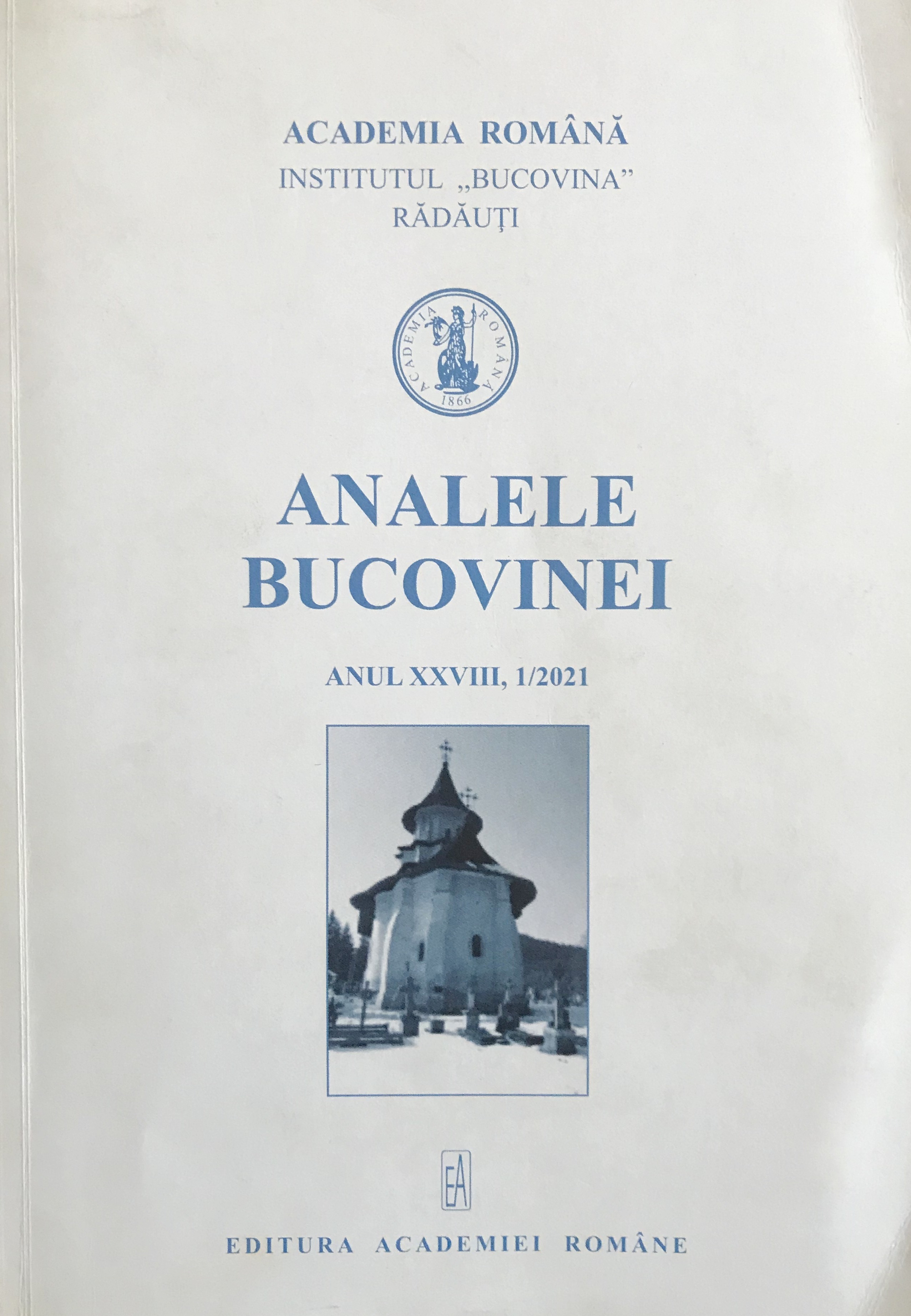STAT CENTRAL ȘI REGIUNE: FONDUL RELIGIONAR
GRECO-ORIENTAL
Central State and Region: the Greek-Oriental Religious Fund
Author(s): Kurt ScharrSubject(s): Christian Theology and Religion, History, Cultural history, History of Church(es), Local History / Microhistory, Recent History (1900 till today)
Published by: Editura Academiei Române
Keywords: Bukovina; church, religious fund; institutional regulations;
Summary/Abstract: In Bukovina, the reformist steps initiated by Emperor Joseph II proved to be lasting in terms of both content and structural and regional perspective. From the point of view of content, the institution of the Religious Fund supported during the19th century a range of political ideas, from supranational ones, promoting the framework state, to the national-irredentist ones, while both aspects concerned with different weights both at the center and the periphery in question had their starting point there. Structurally, the process of institutionalization, i.e. the transition from a form of pure, normative organization, originally installed from the center to an institution that contributes to the active shaping of both space and society, was a decisive one. However, the regional aspect was more complex and therefore the idea, closely linked to it, of an identity of the framework state. The clerical regulatory plan drawn up at the end of the 18th century for Bukovina, which gave both the consistory – hence the church administration – and the Religious Fund a 'constitution', was the central moment. This was about the territorial annexation of the state outwards, to which the new organization of the Greek-Oriental (provincial) Church belonged, which in turn was again a milestone in the structuring of the state administration inwards. Moreover, both the Church and the Fund functioned over the long duration as a substrate for the establishment of a provincial consciousness among the inhabitants of Bukovina, having a strong appeal to the idea of an Austrian framework state. The institution of the religious fund drew its legitimacy from its own stability over time and – which is quite essential – from its connection to space. This resulted in a large overlap of one's own, i.e. institutional, interests with the orientation models provided by the State. Its mission was – beyond the preservation of church infrastructure – to modernize the province according to the needs of the state. Starting from this, the Episcopates of Hackman and Morariu-Andriewicz did not necessarily represent a contradiction, given that the Religious Fund, as an institutional actor, represented Vienna's interests as loyally as it represented, at the same time, within its own lines, the sometimes fierce discussions on the national issue. Both Hackman and Saguna were bishops no doubt loyal to the dynasty and thereby to the state, instead having social-political backgrounds that differed significantly. The question of the church congress presented itself for both hierarchies of ambivalent between the modern currents of the right to political decision and the national component of transformation. Morariu-Andriewicz's period of shepherding took advantage, in a movement contrary to that of his predecessor, of the national realm in the matter of a Genuine Romanian-Orthodox Provincial Church and its Fund. With its policy, the national character of the debate within the Church related to structure and missions acquired a dynamic, which could not later be pushed to the edge and which, in addition, spurred the audience outwards. As a result of this development, both the Orthodox Church and the institution of the Religious Fund became the scene of a conflict between the Ruthenians and the Romanians in Bukovina, initially politically energized, then further used as an instrument by individuals as well as parties. As of the transition to the 20th century, however, imperial and provincial politics also played a decisive role in efforts to find consensus on the structure and work of these institutions, so that here were created – although not always successfully – regular mediation mechanisms that contributed to the temporary de-escalation of the situation. The religious fund thereby mirrored not only in a clearly visible way the dominant discourses of the province before 1914; institutional transformation as well as the national issue were, with nuanced intensities, between the driving forces of change in the province and within the Fund. Radical positions within the institution of the Religious Fund succeeded in imposing themselves only after the break-up of the imperial context. The landscape, completely changed with the conclusion of the peace treaties and the political-territorial reordering, seemed to bring, in the first stage, the much-hoped-for national autonomy for the Church and its institution. In any case, the opposite has become a reality in the medium term: a gradual loss of regional decision-making authority over the Religious Fund, as well as on the church structure of Bukovina towards Bucharest’s policy. The Romanian national state had given upon taking a relatively neutral position and aimed at achieving consensus. With this one can recognize an erosion of trust in both the Fund and the Provincial Church(of legitimacy!) and ultimately a visible weakening of them. Neither was able to sustainably stop the politicization of their institutions, a process that was wreaking havoc in the Kingdom of Romania during the interwar period. They have lost their role as regional mediators of collective social and political interests between Bukovina and the center, in continuous coordination with the conceptions of the state.
Journal: ANALELE BUCOVINEI
- Issue Year: 56/2021
- Issue No: 1
- Page Range: 17-25
- Page Count: 9
- Language: Romanian

